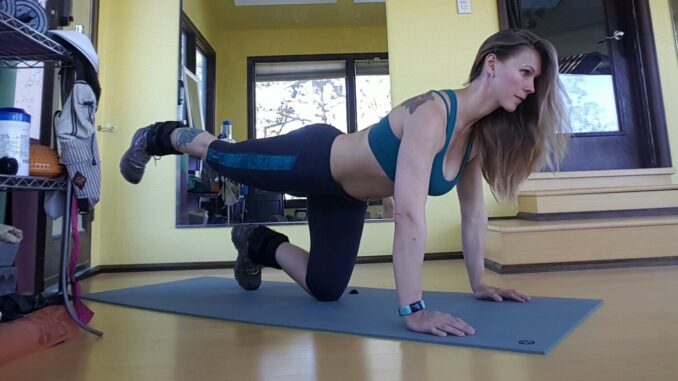
Introduction: Setting up a home workout routine is a convenient and accessible way to prioritize fitness and achieve your health goals without the need for a gym membership or expensive equipment. Whether you’re new to exercise or a seasoned fitness enthusiast, designing a home workout routine that is effective, enjoyable, and sustainable requires careful planning and consideration. In this comprehensive guide, we will explore the essential steps and strategies for creating a personalized home workout routine that fits your lifestyle, preferences, and fitness goals.
Step 1: Assess Your Fitness Goals and Needs Before diving into designing your home workout routine, take some time to reflect on your fitness goals, needs, and priorities. Are you looking to lose weight, build muscle, improve cardiovascular endurance, or enhance overall health and well-being? Consider factors such as your current fitness level, any existing injuries or limitations, available space and equipment, and the time you can dedicate to exercise each week. Setting clear, specific, and realistic goals will guide your workout programming and keep you motivated and focused on your fitness journey.
Step 2: Choose Your Workout Format and Frequency Next, determine the format and frequency of your home workouts based on your goals, preferences, and schedule. Decide whether you prefer structured workouts with specific exercises and routines or more flexible, intuitive training sessions. Consider factors such as the duration of each workout, the number of days per week you can commit to exercise, and whether you prefer full-body workouts or split routines targeting different muscle groups. Aim for consistency and balance in your workout schedule to ensure adequate rest and recovery while maximizing progress and results.
Step 3: Create a Balanced Workout Plan Design a balanced workout plan that includes a variety of exercises and training modalities to target different muscle groups, movement patterns, and fitness components. Incorporate a mix of strength training, cardiovascular exercise, flexibility training, and functional movement exercises to achieve a well-rounded and comprehensive fitness program. Customize your workouts based on your goals and preferences, alternating between different types of workouts and adjusting intensity and volume as needed to challenge your body and prevent plateaus.
Step 4: Select Equipment and Set Up Your Home Gym Depending on your fitness goals and preferences, decide what equipment you need to set up your home gym. Consider investing in versatile and space-efficient equipment such as dumbbells, resistance bands, kettlebells, a stability ball, a yoga mat, and a jump rope. You can also incorporate bodyweight exercises and household items such as chairs, stairs, and water bottles for added resistance. Designate a dedicated space in your home for exercise, ensuring it is well-lit, ventilated, and free from distractions to create a conducive environment for workouts.
Step 5: Design Your Workout Program Once you have determined your fitness goals, workout format, frequency, and equipment, it’s time to design your workout program. Create a weekly workout schedule that includes a mix of strength training, cardiovascular exercise, and flexibility training. Structure your workouts based on your goals and preferences, alternating between different types of workouts and focusing on different muscle groups and movement patterns each day. Incorporate progressive overload by gradually increasing intensity, volume, or resistance over time to challenge your muscles and stimulate growth and adaptation.
Step 6: Warm Up and Cool Down Prioritize warm-up and cool-down exercises before and after each workout to prepare your body for exercise and promote recovery and flexibility. Begin each workout with a dynamic warm-up routine that includes movements such as jogging, jumping jacks, arm circles, and leg swings to increase blood flow, raise body temperature, and activate muscles. At the end of each workout, perform static stretches and foam rolling exercises to release tension, improve flexibility, and promote relaxation and recovery.
Step 7: Listen to Your Body and Adapt Accordingly Listen to your body and pay attention to how you feel during and after workouts. Adjust your workout intensity, volume, and exercise selection based on your energy levels, recovery status, and any signs of fatigue or discomfort. Be mindful of your form and technique to prevent injuries and ensure effective muscle engagement. Modify exercises as needed to accommodate any existing injuries or limitations, and consult with a fitness professional or healthcare provider if you have any concerns or questions about your workout routine.
Step 8: Track Your Progress and Adjust Your Plan Keep track of your workouts, progress, and performance metrics to monitor your fitness journey and stay motivated and accountable. Use a workout journal, fitness app, or spreadsheet to record details such as exercise selection, sets, reps, weights, and perceived exertion. Regularly review your progress and adjust your workout plan as needed to continue challenging yourself and achieving your goals. Celebrate achievements and milestones along the way to stay motivated and committed to your home workout routine.
Conclusion: Designing a home workout routine that is effective, enjoyable, and sustainable requires careful planning, consistency, and dedication. By following these steps and strategies for creating a personalized fitness plan, you can prioritize health and fitness, achieve your goals, and enjoy the convenience and flexibility of exercising at home. Whether you’re a beginner or an experienced fitness enthusiast, the key is to find what works best for you, listen to your body, and stay committed to your fitness journey. With the right mindset, motivation, and guidance, you can create a home workout routine that empowers you to live a healthier, happier, and more active lifestyle.